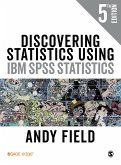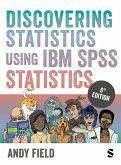In his signature pragmatic and friendly style, David Silverman acts as your stand-in supervisor in the seventh edition of this book, taking you step-by-step through different methods for making sense of qualitative data.
Whether you are interested in analysing visual images, interviews, focus groups or online data, this book provides a clear framework for using qualitative data to answer your research questions.
The book provides:
. A strong grounding in research design principles so you can embed best practice into your research project.
. Diverse real-world examples so you can see how principles are applied in practice.
. Coverage of new developments in qualitative research including working with online data.
If you are new to qualitative research or conducting your first research project in the social sciences, this book gives you the practical grounding in qualitative methods you need to get started.
Hinweis: Dieser Artikel kann nur an eine deutsche Lieferadresse ausgeliefert werden.
Whether you are interested in analysing visual images, interviews, focus groups or online data, this book provides a clear framework for using qualitative data to answer your research questions.
The book provides:
. A strong grounding in research design principles so you can embed best practice into your research project.
. Diverse real-world examples so you can see how principles are applied in practice.
. Coverage of new developments in qualitative research including working with online data.
If you are new to qualitative research or conducting your first research project in the social sciences, this book gives you the practical grounding in qualitative methods you need to get started.
Dieser Download kann aus rechtlichen Gründen nur mit Rechnungsadresse in A, D ausgeliefert werden.
Hinweis: Dieser Artikel kann nur an eine deutsche Lieferadresse ausgeliefert werden.
There is no better book for teaching qualitative research. It is also a great start point for researchers considering what might be involved in using different qualitative methods and situating them in a broader context. For Silverman qualitative research is about quality and rigor and his mission is to improve both. It is extremely clearly written and free of qualitative jargon; while not shy of theory it shows how it can support design and analysis. The new edition builds effectively on the platform of the previous editions and sets the standard for writing about qualitative research. Jonathan Potter









